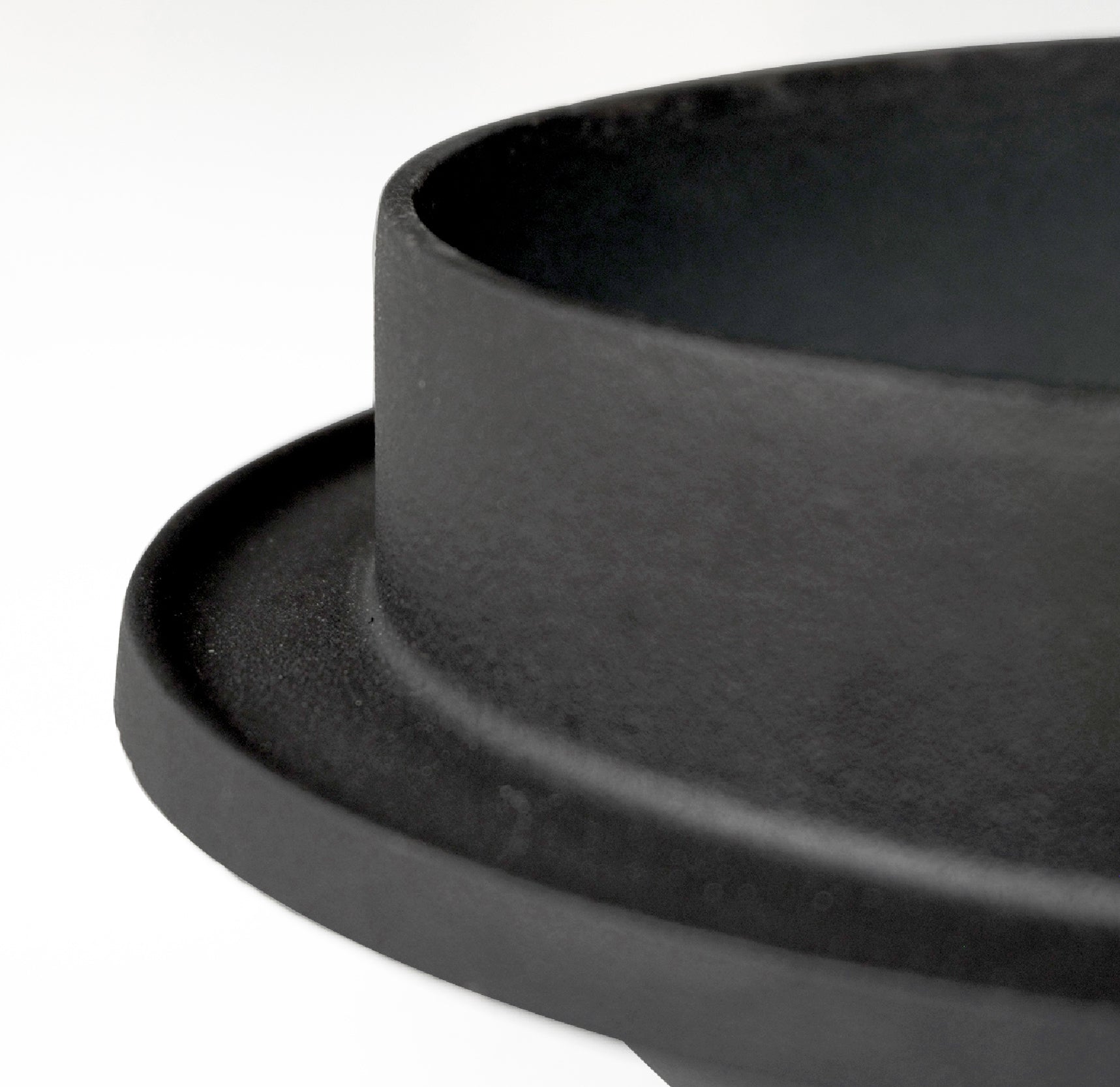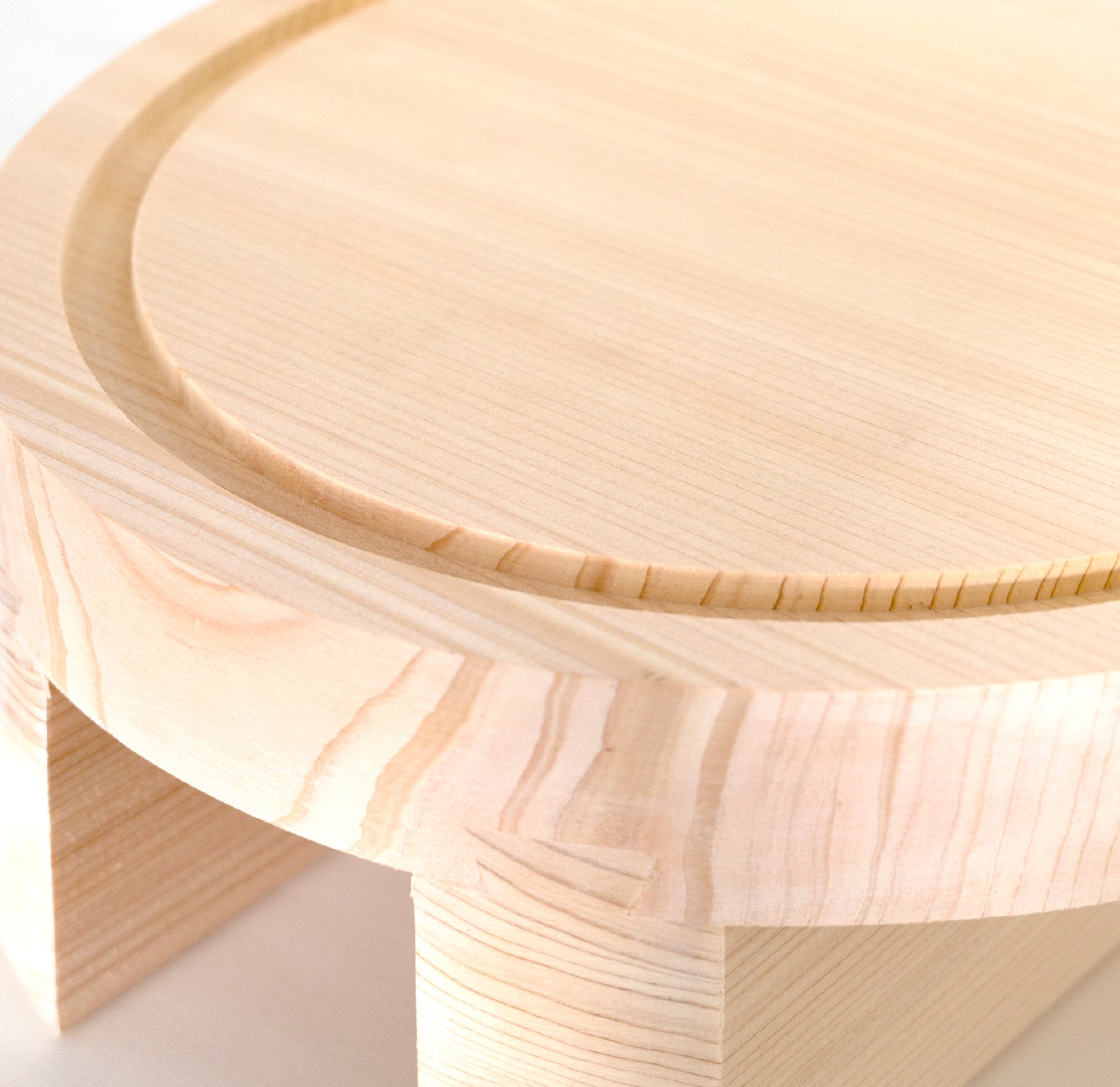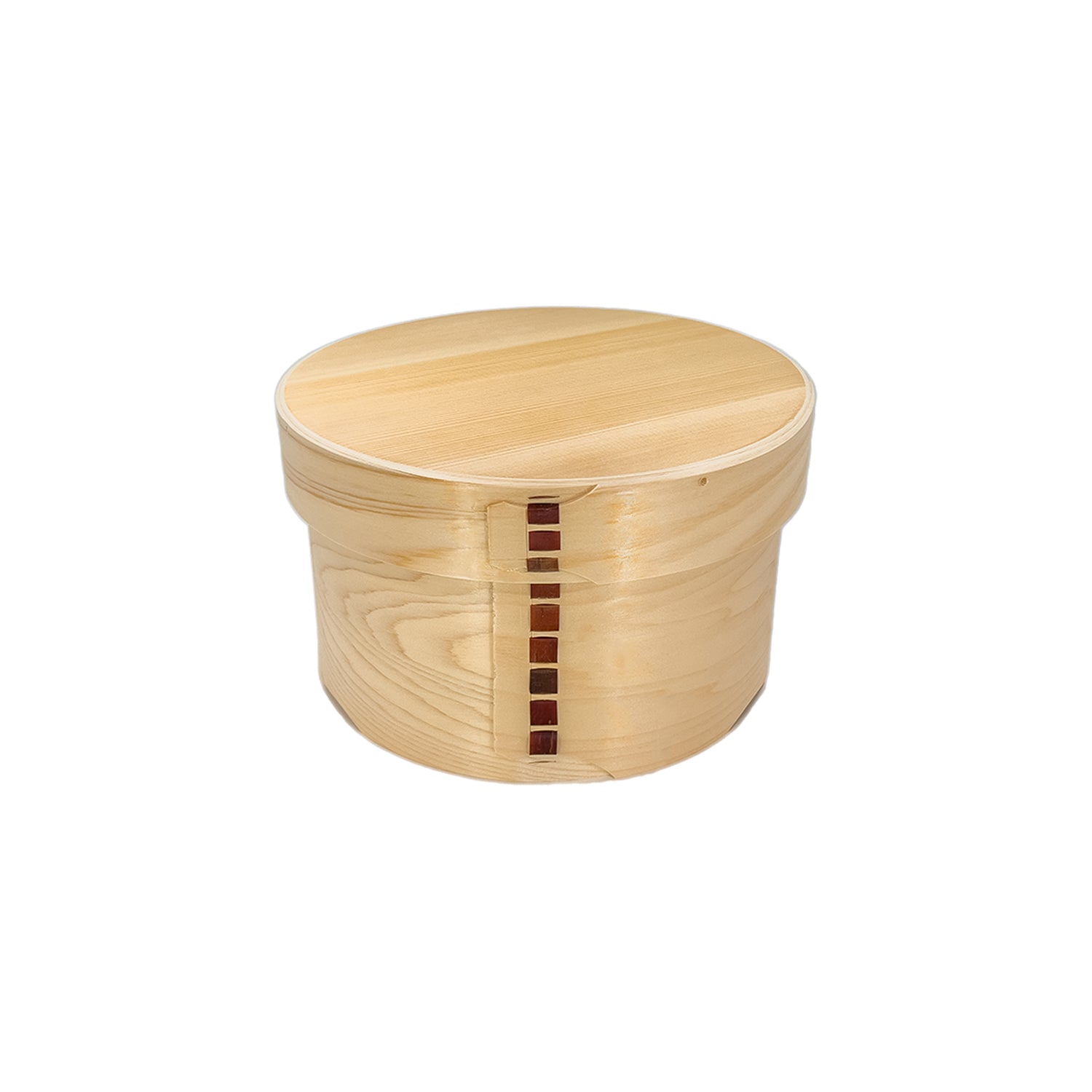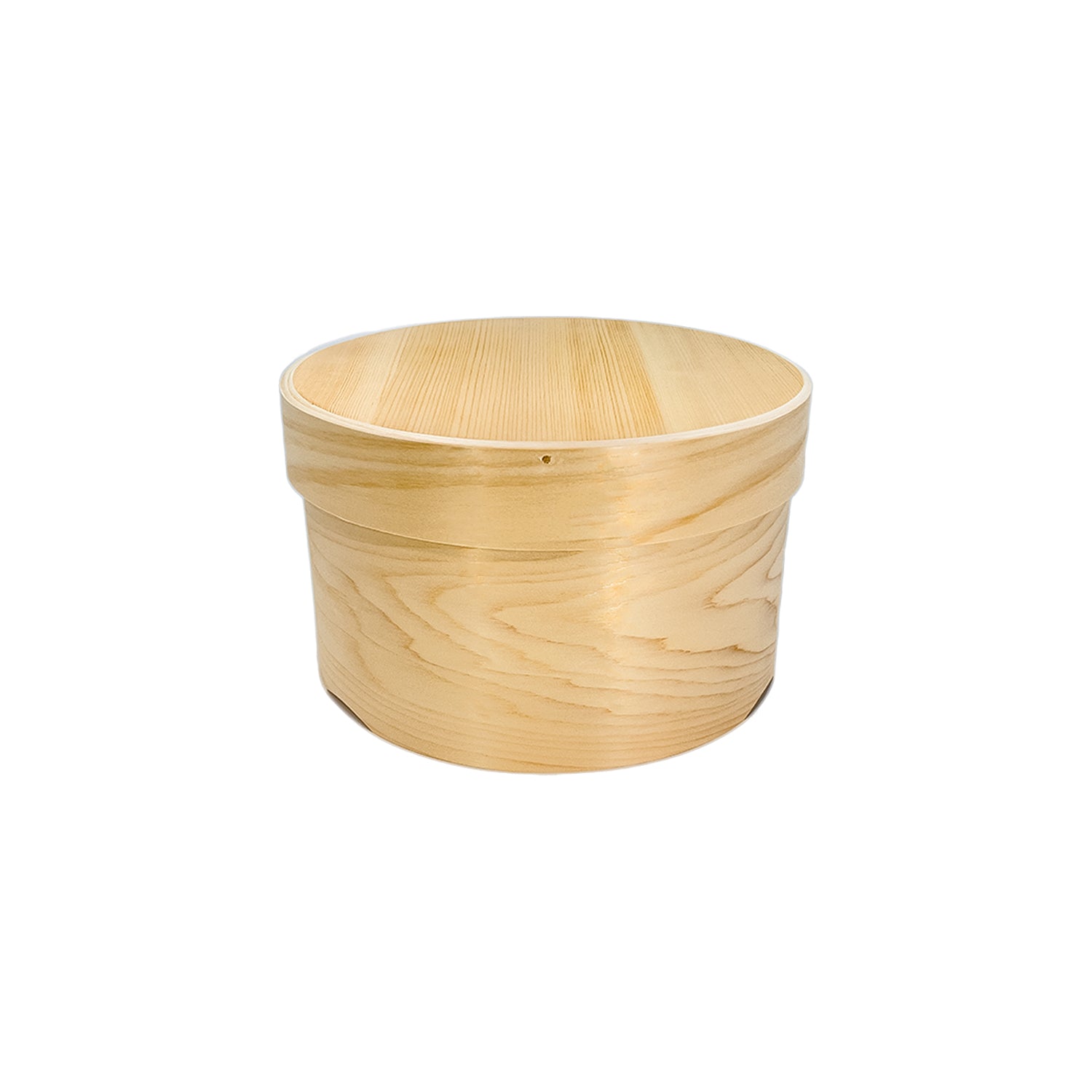





KAMA-ASA’s Cast Iron Rice Cooking Pot
Features
A rice cooking essential
Rice cooker plays a critical role in rice cooking. We believe cooking rice in a Kama* and Kamado* brings out the best flavor and texture of rice. KAMA-ASA's Cast Iron Rice Cooking Pot adopts a unique flat shape that allows rice to be cooked with high heat efficiency similar to "Kamado", enabling you to cook the most delicious rice even without "Kamado."*1: "Kama" is a traditional Japanese cooking pot. With its round bottom, heats transfer from bottom to sides efficiently. When cooking with Kama, Kamado is necessary to be used with. Without Kamado, heat escapes and the temperature in Kama becomes low and unstable.
*2: "Kamado" is a traditional Japanese cooking stove that fits the lower half of a kama. By covering the lower half of a kama, high and stable heat is maintained, which is a key to bring the best flavor and texture of rice.
Gathered the finest materials and techniques from all over Japan.
The pot is cast in Yamanashi. Then, surface treatment is carried out in Kanagawa, and finally, finishing is done in Iwate. Additionally, the lid is made from carefully selected materials in Nagano using traditional techniques. By combining materials and techniques from various regions of Japan in this way, an unparalleled high-quality pot is created.
4 Key Features of KAMA-ASA's Cast Iron Rice Cooking Pot
Ease of heat adjustment
Made from cast iron, this pot excels in both heat conduction and heat retention, making it easy to adjust the heat during cooking. Its ability to retain heat also makes it difficult for heat to escape when letting the rice stand after cooking.


Rust-resistant nitriding oxidation on the surface
The surface of the pot undergoes nitriding treatment, followed by oxidation treatment. This process maintains the original texture of the cast iron while achieving resistance to rust. Unlike coating the pot with paint, this technique ensures long-lasting resistance to rust without worrying about peeling.

A standing rim that prevents spilled water from dirtying the stove.
By adding a rim to the edge of the pot, spills are less likely to drip down, making the stove less prone to getting dirty. Additionally, it's easy to clean up spills afterward, making maintenance simple.
Wooden lid
The lid is made from Sawara cypress sourced from Kiso, Nagano Prefecture. Sawara is known for its high oil content and resilience to moisture, which prevents rice from becoming gooey by absorbing excess moisture during cooking. By carving a groove on the underside of the lid to ensure a snug fit onto the pot, the seal inside the pot is enhanced, resulting in perfectly fluffy rice. Additionally, by adopting the traditional joinery technique called "Yatoizanetsugi", which has been used in furniture and construction for centuries, the strength of the joints is increased. Even when the lid patially cracks, the joinery prevents steam from escaping.

Details
Specifications
- Dimensions
- Pot = 21cm diameter (26cm diameter including flange) x 9.5cm high
- Weight
- 3.2kg (including lid)
- Heat source
- Compatible with gas and induction cooktop
- Capacity
- 300-600g of raw rice
- Cooking time
- About 30 minutes (excluding the time for washing and soaking the rice.)
- Material
- Pot = Cast iron
Lid = Sawara cypress - Origin
- Pot = Yamanashi, Kanagawa and Iwate prefecture
Lid = Nagano prefecture
Precautions
- The pot could rust.
- There could be color unevenness due to the nature of the product.
- As the lid is made of wood, fine cracks may occur regardless of the period of use.
- To prevent breakage, avoid dropping or hitting the lid.
- When using on an induction cooktop, do not rapidly increase the temperature as it may cause deformation or cracking.
- Do not dry burn as it may cause deterioration of the pot.
- Metal tongs, turners, etc., should not be used as they may scratch the pot and make it more prone to rust.
- Be sure to read the enclosed instruction manual before use.
Before first use
Pot
- Wash with water
Use detergent only for the first wash and scrub thoroughly with a scrub brush. - Remove moisture
After wiping away all water droplets, place the pot on the stove over low heat until the bottom gets dry, then turn off the heat and let it dry with residual heat.
Lid
- Soaking
Immerse the entire lid in water. Since the lid tends to float, soak it alternately, turning it over every 30 minutes.
Note: Sawara wood has a unique aroma. If you dislike the smell, soaking in rice water instead of plain water can help mitigate it.
How to care
Pot
- Transfer cooked rice to a container
Make sure to transfer cooked rice to a container immediately. Leaving rice in the pot can transfer a metallic taste and increase moisture, leading to rust. - Wash promptly after transferring rice
Leaving rice in the pot can cause rust due to moisture, and rice grains may harden, making cleaning difficult. Wash promptly after transferring rice to a container. - Do not scrub with hard objects
The inside of the pot has a thin layer called "oxidation film" that inhibits rust. Scrubbing with hard objects can damage this film and make it more prone to rust. Do not use detergent; wash with a soft scrub brush and water only (be cautious of the brush's metal fittings). Do not use hard items like metal or nylon scrubbers. For stubborn residue, boil water and soak before washing. - Do not leave the pot wet
Leaving the pot wet can cause rust. After washing, wipe away all water droplets, place it on the stove over low heat until the bottom gets dry. Then turn off the heat and let it dry with residual heat. Be careful not to leave it in a dry burn state.
Lid
- Moisten lightly before use
Repeated rapid changes in humidity can cause warping or cracking. Dry wood exposed to steam is also a cause. Before use, lightly moisten it with water before cooking. - Wash without using detergent
Sawara cypress contains a lot of oil which acts as protection. Detergent breaks down the oil and weakens the wood. Wash with a palm fiber scrub brush and water only. - Dry upright
After washing, dry it upright along the grain. Laying it flat to dry can trap moisture and promote mold growth.
Troubleshooting
- The pot has rusted.
Rust is harmless to humans, so if it doesn't affect the taste, you can continue using it as is. If you notice a rusty smell or taste in rice, rub the rusty area with a dry palm fiber scrub brush to remove surface rust. Then, put tea leaves in the pot, boil them, and repeat this process several times to prevent further rust. - The lid got cracks.
The lid is made by laminating several pieces of wood together, so cracks may occur along the joints regardless of the period of use. However, the joints are reinforced with "yatoizanetsugi" plates, so steam leakage is rare. You can continue to use it without worry. - The inside of the pot is scratched.
Repairs are possible but may incur costs similar to or higher than purchasing a new one. However, scratches do not render it unusable, so you can continue using it as is. - Can the pot be used for purposes other than cooking rice?
There is no problem, but acidic dishes (such as those containing tomatoes or vinegar) may affect the protective film, so it's best to avoid them. - Can I purchase only the lid?
Of course. Please contact KAMA-ASA for details.
How to cook
- 1. Rice washing
Wash and soak the rice. (at least 30 minutes in summer; at least 1 hour in winter) - 2. Drain
Place in a colander and drain thoroughly. - 3. Add rice and water in the pot
After transferring the rice to the pot, add water in the same weight as the rice. (Approximately 150cc per 1 rice cup) - 4. Boil (within 10 minutes)
e.g., 7 minutes on low heat, then turn up the heat until it boils. - 5. Low heat
Once it boils, simmer on low heat for 10 minutes. - 6. Resting
Turn off the heat and let it stand for 10 minutes.
Note: These cooking instructions are just one example we recommend, so find the ideal cooking method for yourself.
For those who prefer softer rice
Adjust the water amount accordingly.
For sushi rice, etc.
Boil until it reaches a boil, then follow steps 5-6.
FAQ
Yes, you can order items not listed online. Please feel free to contact us using the inquiry form.
Yes, we offer a fee-based gift wrapping at JPY660 per set (tax included). To request a gift wrapping, please contact us using the inquiry form.
Yes, but for online orders, we offer a free engraving service for knives only. Please select the desired engraving option, enter text and add the knife to cart. Engraving for products other than knives is only available at our physical store at Kappabashi, Tokyo.
Please feel free to contact us using the inquiry form. We are happy to make a quotation for your order. It would be helpful if you could first tell us the delivery address and the desired due date so that we can proceed smoothly.
CATEGORY
online stores
Delivery preferences
ONLY available within JAPAN. For fastest shipping, please select "No specified date." If knife engraving is requested, delivery date cannot be specified. Shipment will be within 7–10 days from order.








